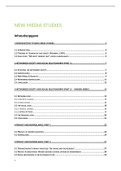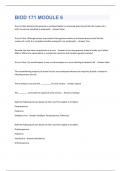Samenvatting
Summary All essential material from the classes of Prof. Dr. De Wolf!
- Instelling
- Universiteit Gent (UGent)
Complete summary with all essential learning material from the classes of Prof. Dr. Ralf De Wolf, including guest lectures.
[Meer zien]






